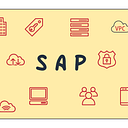How to select an Integration Platform for your Business — Part I
Let’s understand the need for an integration platform for your business
What is Integration?
In layman's terms, integration is the interconnection of disparate systems to exchange data. In a conversation of a group of people, if different people speak different languages, then you need a language translator to keep the conversation going. Integration platforms perform a similar function in an enterprise IT system where disparate systems use different protocols and messaging formats to exchange information.
Why Integration?
The technology landscape has evolved so much from the early mainframe computers where we had one large computer which executes a given task and produce the result. In today’s world, to do a given task, you need multiple systems to interact. This is the distributed architecture where the technology world is heading. Instead of having one monolithic application doing everything, enterprises have turned into multiple systems each executes a given micro function or a selected set of micro functions and does that much better than the large monolith. It is a given that even the smallest enterprise has more than one system and integration between these systems is a must to keep the business operations going.
How to get started with Integration?
In today’s world with the increased adoption of information technology within businesses regardless of the scale of the business, we can assume that there is some sort of an IT system in place. With the growing popularity of cloud platforms like AWS, Microsoft Azure, Google Cloud, and Software as a Service (SaaS) tools, you can own an IT platform without having a single server within your premises. The only thing you require is a device with a browser interface.
Having said that, let’s assume that you have a set of systems (this can be10s, 100s, or even 1000s) that you are already using to store various business data and execute business processes. Even though these systems do their respective tasks, overall business success depends on the cohesive nature of their interactions.
Most of the small businesses start integration by writing their own software programs with technologies like Java or .Net. Given the set of features, libraries, and material available on these frameworks, you can absolutely do that without any issue. This would have been the step 0 if your IT ecosystem stays the same. But in reality, with the growth of the business, more and more systems need to be introduced into the IT ecosystem, and implementing more and more programs and modifying the existing programs, and maintaining those will become a huge challenge and that would hinder the ability to innovate within the industry.
Instead of spending time on implementing customized programs to integrate systems, you can start with an ESB (enterprise service bus). There are many open-source and commercial ESB offerings available in the market and you can start with one. These ESBs provide high-level, domain-specific language (DSL) to implement the integrations with pre-built templates and support various messaging formats and wire-level protocols so that developers can take those capabilities for granted. This reduces the time to market and opens up new avenues to innovate and increase the efficiency of the business operations.
As depicted in the above figure, the ESB will integrate systems of various types including on-premise systems as well as off-premise systems like systems owned by partners and third-party cloud services like Software as a Service (SaaS) applications. This sort of integration is called hybrid integration. At a high level, the integration platform (or an ESB) provides the following capabilities.
- Application integration
- Data integration
- Business to Business (B2B) integration
- API management
These high-level requirements are fulfilled with a set of functional capabilities available in those integration platforms. Given below is a list of such capabilities available in an integration platform.
- Data transformation
- Protocol translation
- Application connectors
- File processing
- Routing and orchestration
- Messaging/Event handling (synchronous and asynchronous)
- EDI support
- Event stream processing
- API policy enforcement and management
- Ecosystem/partner community engagement
In addition to the above-mentioned capabilities, there are many more capabilities available in those integration platforms. Based on the need, you can utilize those capabilities.
Having an ESB that integrates the enterprise systems is the first step of building an effective integration platform. With the advancements in the technology landscape, integration requirements have also been evolved beyond the traditional ESB style integration. Let’s discuss these requirements in detail.
Understanding the solution architecture
There are several different solution architecture patterns available in the technology landscape to address these modern integration challenges. One of the most adopted architecture patterns for integration is the layered architecture based on REST APIs. We have decided to go with that pattern given its simplicity and adoption.
The above figure depicts the solution architecture for API-led integration that can be used to fulfill the expectation we set in the previous section. This architecture clearly defines the functional requirements of different layers based on the systems each layer interacts within the overall solution.
- Experience APIs — At the highest interaction point, users (internal and external) expect access to fine-grained, purpose-built, cutting-edge information with high value and easy usage. This is where innovation happens. As an example, a user who wants to buy a bicycle through his mobile phone wants to know every detail of the bicycle through the phone itself (except the real bicycle ride). The data which is exposed to this layer needs to improve the user experience or else it will be invalid.
- Process APIs — Providing quality experience APIs require the interaction of multiple systems and data sources and the proper design of data structures. This is where the process API layer comes in handy. This layer acts as the orchestration layer for multiple systems and data sources while fine-tuning the end result for the above layer (Experience API layer). Providing API based access to these capabilities allows users to create value and bring agility to business operations.
- System APIs — There should always be a component that does the heavy-lifting on behalf of the entire system. That is what this system APIs layer does. It makes interactions with core data sources and caches where valuable business data resides for longer periods and provide guarantees of data. These core systems can also expose their functionalities as APIs with proper controls in place so that it is much easier to interact with.
Each of these layers requires a certain set of specific functionalities that can be supported by the selected integration platform. Let’s discuss these components in detail.
- Experience APIs layer can be implemented with an API management platform. This may require a different set of functionalities depending on your enterprise and selecting an API management vendor needs to be done after evaluating the requirements. The fundamental capabilities like security, monitoring, rate-limiting, throttling, caching, and better performance are supported by the majority of vendors.
- Process APIs layer can be easily implemented with an integration technology platform that is capable of doing protocol translations, message transformations, service orchestration, and support for major messaging formats and wire-level protocols. These integrated services can be exposed as managed or un-managed APIs to the upper experience layer. One fundamental difference in this API-led connectivity or API-led integration is that you don’t need an API management component at each and every layer though it discusses APIs at each layer.
- System APIs layer can sometimes be directly passed through if the core data is coming from those systems through a defined API. If not, there should be a core business logic layer that converts the business-specific, raw data to meaningful data through an intermediate layer. Users can either utilize an existing integration framework or a standard web-services, microservices technology stack to implement this layer.
- One major advantage of this proposed API-led integration approach is that every functional capability is available in the means of APIs. Having a centralized developer portal that has details of all the APIs (experience, system, and process) would increase the overall operational efficiency in magnitudes since users do not need to make individual manual requests to get certain things implemented on a lower layer. There are API management vendors who can provide this sort of a developer portal as part of their core offering or through a plugin or add-on.
Support for event-driven use cases
More and more business use cases in the enterprise world are built around handling large amounts of data. It used to be the extract, transform, and load (ETL) type of use cases in the past where users migrate large amounts of data in an asynchronous manner from one system to another system. Another example of an asynchronous, event-based use case is the publish and subscribe model (pub-sub) with the use of message brokers. Having these capabilities in the integration platform would be useful if your enterprise has similar use cases.
A new set of event-driven use cases are identified with the increased popularity of artificial intelligence (AI) and machine learning (ML) technologies used for business intelligence and automation. Hence, having the ability to support real-time, event-driven use cases can become really useful for any enterprise. Sometimes these use cases are called stream processing or streaming integrations.
Up to this point, we have not discussed any modern technology terms like microservices, cloud-native, containers which can be surprising for most of you. That was done intentionally so that we understand the fundamentals well before jumping into those cutting-edge technologies. You can read more on this topic in the next article of this series.

